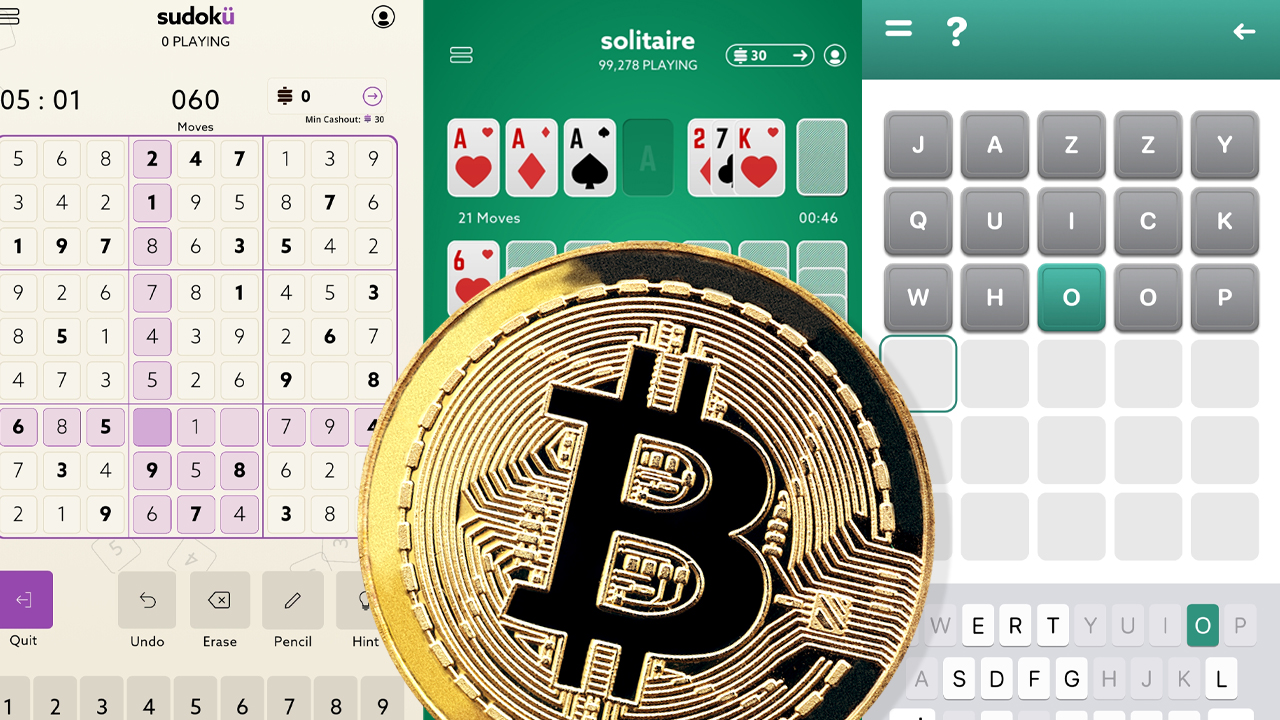 Seven days after the financial technology and bitcoin payments firm Zebedee announced it secured a $35 million capital raise, the company has revealed a new partnership deal with the mobile game studio Viker. The two companies have enhanced three classic video games with Zebedee’s bitcoin reward mechanics which include “Solitaire,” “Sudoku,” and the game “Missing […]
Seven days after the financial technology and bitcoin payments firm Zebedee announced it secured a $35 million capital raise, the company has revealed a new partnership deal with the mobile game studio Viker. The two companies have enhanced three classic video games with Zebedee’s bitcoin reward mechanics which include “Solitaire,” “Sudoku,” and the game “Missing […]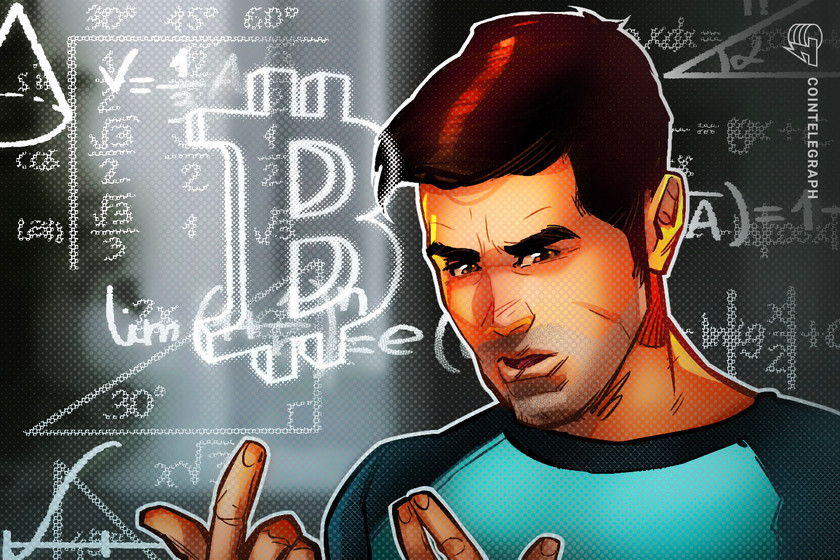
The reduced difficulty allows Bitcoin miners to confirm transactions using lower resources, enabling smaller miners a fighting chance to earn the mining rewards.
The difficulty in mining a block of Bitcoin (BTC) was reduced further by 5% to 27.693 trillion as network difficulty maintains its three-month-long downward streak ever since reaching an all-time high of 31.251 trillion back in May 2022.
Network difficulty is a means devised by Bitcoin creator Satoshi Nakamoto to ensure the legitimacy of all transactions using raw computing power. The reduced difficulty allows Bitcoin miners to confirm transactions using lower resources, enabling smaller miners a fighting chance to earn the mining rewards.

Despite the minor setback, zooming out on blockchain.com’s data reveals that Bitcoin continues to operate as the most resilient and immutable blockchain network. While the difficulty adjustment is directly proportional to the hashing power of miners, the total hash rate (TH/s) recovered 3.2% along similar timelines, as shown below.

At its peak, the Bitcoin hash rate reached an all-time high of 231.428 exahash per second (EH/s) when BTC prices fell to $25,000 last month in June — raising momentary concerns around extensive power usage.
Ever since China banned all crypto trading and mining operations in June 2021, the United States picked up slack in becoming the highest contributor to the global Bitcoin hash rate. However, Chinese miners resumed operations in September 2021. According to Statista data, the US represents 37.84% of the global hash rate, followed by China at 21.11% and Kazakhstan at 13.22%.
Previously, Cointelegraph reported that meteoric drop in GPU prices have opened up a small window of opportunity for small-time miners to procure a piece of more powerful and efficient mining equipment. That being said, miners see falling GPU prices as a means to offset their operational costs amid an ongoing bear market.
Related: Sustainable Bitcoin mining power mix hits 59.5%: BTC Mining Council
Easing up concerns related to exorbitant power usage, a report released by the Bitcoin Mining Council uncovered that nearly 60% of the electricity used for BTC mining comes from sustainable sources.
In Q2 2022, #Bitcoin mining efficiency surged 46% YoY, and sustainable power mix reached 59.5%, above 50% for the 5th quarter in a row. The network was 137% more secure YoY, only using 63% more energy. It is hard to find an industry more clean & efficient.https://t.co/gqYn8qew9R
— Michael Saylor⚡️ (@saylor) July 19, 2022
The study also found that BTC mining accounted for just 0.09% of the 34.8 billion metric tons of carbon emissions estimated to be produced globally and consumed just 0.15% of the global energy supply.

A Bitcoiner in Costa Rica had a “win-win” experience when he went on holiday and only spent Satoshis (Bitcoin) while traveling along the pacific coast.
Passport, sunglasses, beach towel, Bitcoin (BTC)? A BTC enthusiast on vacation demonstrated that the world's largest cryptocurrency could soon become a holiday essential. Eugenio, a Costa Rican Bitcoin maximalist, paid his way on holiday with just Bitcoin in his wallet during a long weekend on Costa Rica’s Pacific coast.
A hotspot for Bitcoin adoption and real-life whale spotting, the towns of Uvita, Dominical and Ojochal are home to Bitcoin Jungle, a Bitcoin-beach-inspired project, as well as a budding community of Bitcoin-friendly merchants. Eugenio documented his entire Bitcoin holiday to the destination on Twitter. He told Cointelegraph, “The only fiat I had to use was filling the tank [of the car] before departing.”
I just had a 100% #Bitcoin vacation in Uvita, Dominical and Ojochal #CostaRica thanks to the work of @BitcoinJungleCR creating a circular economy and supporting many merchants and business. Zero fiat was used, no banks involved, no trusted third parties, just real hard money. pic.twitter.com/YrcQfIumfx
— Eugenio Crypto Disrespecter (@E_moonwatcher) July 18, 2022
Eugenio explained that he wanted to support the adoption and to show that anyone can do the same, in a convenient and fun way, "using Lightning Network seamlessly with no payment processors or banks involved."
“I wanted to be able to pay for my little sister's gelato while I was at the beach, for example.”
Eugenio paid for more than his sister’s ice cream: he paid pizzas, coffees, steaks and even a trip to the market for kombucha with Bitcoin.

Reportedly, merchants asked, “would you like to pay with Lighting or on-chain?” On-chain transactions take on average 10 minutes to confirm, are slow, and sometimes costly. Lightning transactions are near-instant, near-free, and are a “win-win for me and for the merchants,” Eugenio explained.
“It is extremely convenient, Bitcoin is money. You can use it to spend and can use it to save, you can do both in an easy way without the fees and hurdles embedded in the legacy system, plus you can always buy back the sats with the fiat you were going to use in the first place.”
The Lightning Network is quietly catching on, and examples of its adoption slowly spread like roots reaching across the globe. From British families to Senegalese surfers, the appetite for transactions over Lightning means more and more Bitcoin is used on the layer two platforms.
Related: Andorra green lights Bitcoin and blockchain with Digital Assets Act
Eugenio shares some advice for those reluctant to use the LN or event to visit Costa Rica. A proud Tico (Costa Rican local), he suggests, “Don't overthink it. The place is stunning, safe, full of nature and adventure. Use the Bitcoin Jungle Business map for guidance and a Lightning Wallet.”

The place is adopting Bitcoin “organically,” and some of the locals have taken pride in accepting Bitcoin, Eugenio told Cointelegraph.
As per the above map, there are a growing number of merchants across Costa Rica accepting Bitcoin “with a smile.” With the summer holidays in full swing, Bitcoin wallets might be on packing lists around the world, alongside passports, sunglasses and sunblock.
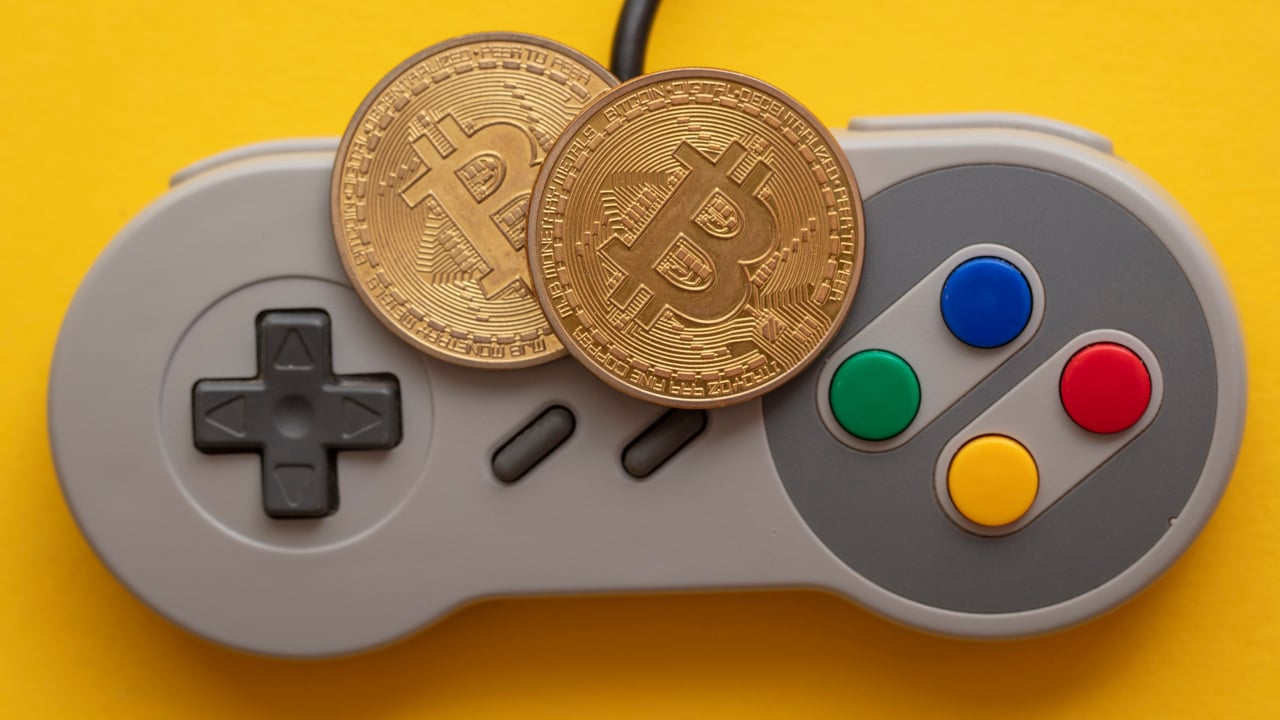 On Tuesday, the fintech and payment processor Zebedee announced the company has raised $35 million from Kingsway Capital, Raine Group, and video game giant Square Enix. Zebedee detailed that the Series B funding will help the startup “scale company-wide to meet the needs of the biggest names in the games industry.” Gaming-Focused Fintech Zebedee Secures […]
On Tuesday, the fintech and payment processor Zebedee announced the company has raised $35 million from Kingsway Capital, Raine Group, and video game giant Square Enix. Zebedee detailed that the Series B funding will help the startup “scale company-wide to meet the needs of the biggest names in the games industry.” Gaming-Focused Fintech Zebedee Secures […]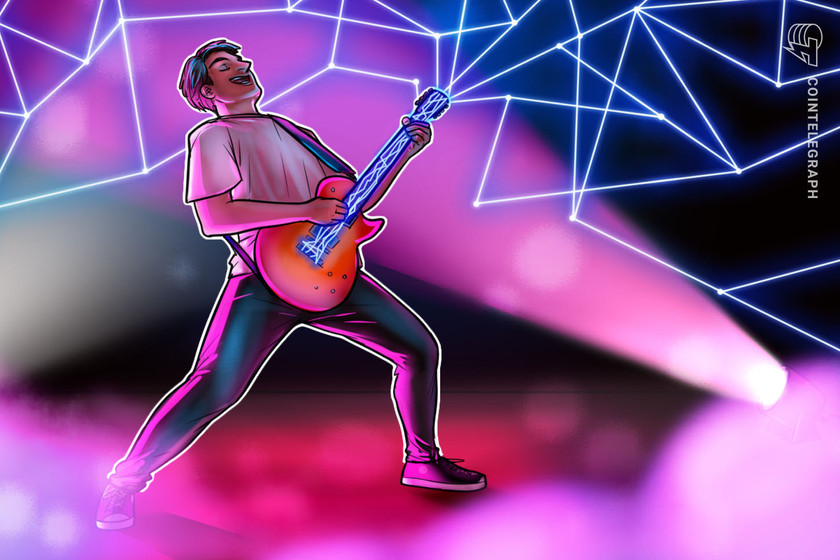
A busker in British Columbia got a lesson in the Lightning Network after a passerby offered to send some Bitcoin his way.
The Canadian band The Carbons got a little more than just a tip during a live performance in Kelowna, British Columbia. When passerby Ben from BTCSessions, a Youtuber and Bitcoin (BTC) educator, saw that the band accepted Bitcoin, he had to send some magic internet money their way.

Tomy (frontman for The Carbons) had been into crypto since 2017, but like many people new to crypto, he thought he’d “missed the boat.” The price per BTC was around $2500. He told Cointelegraph that he began research in earnest when he:
“Realized that it was basically an insurance policy for the current monetary system. At that point, it was around $8000. It's been a wild ride since then, but I am playing the long game :)”
Fast forward to his live performance in Kelowna this weekend, and Tomy advertised he accepted crypto as payment. Unfortunately, his phone was out of juice at the time that Ben walked by, so the pair linked up on Instagram later on. As per the screenshots of the Instagram conversation, Tomy shared an Ethereum (ETH) address to receive a donation and become The Carbon’s first crypto donor.
Short story: saw a dude in Kelowna playing guitar with a sign asking for Bitcoin tips. His phone was dead but we linked up later online so I could tip. He offered an ETH address because he still thought bitcoin was slow/expensive.
— BTC Sessions (@BTCsessions) July 18, 2022
Here's our convo.
1/2 pic.twitter.com/Fx2Hu1mCyx
However, as Ben is a Bitcoin maximalist, he said he’d be happy to send some Bitcoin–not Ethereum–his way. Ben told Cointelegraph that, among other things, it’s “The foundational rules that govern the network, and the ease (or lack thereof) with which they can be changed,” that guide his Bitcoin conviction.
Ben pointed Tomy towards downloading a Bitcoin Lightning wallet, and moments later, they were sending each other Bitcoin instantly over the Lightning Network (LN). Transaction costs are near free on the LN, and microtransactions are easy, which prompted Tomy’s response, “that’s fucking awesome.” By comparison, sending money over Ethereum–even at its lowest levels in two years–costs well over $1.

Tomy told Cointelegraph that it was his first experience using the LN, and it took “an hour of research on YouTube to decide on a wallet and then another few minutes to figure out how to use it.”
“I hadn't heard about the Lightning Network until last week! It makes me want to trade all my Litecoin and ETH for Bitcoin!”
The Carbons have since received three BTC donations, adding that “all the tips help,” but it probably hasn’t moved the needle on their Spotify revenues just yet. Bitcoin expert Ben told Cointelegraph that he's been using the Lightning Network since 2018, back when it was “clunky and difficult, but it worked.” LN has since become a part of his daily routine:
Undoubtedly, LN is well-known to the Bitcoin community and has spread roots across the globe. From settling up lunch in the United Kingdom to sorting out sim cards in Mozambique to paying for parties in Portland, United States, it's gained traction.
Related: The UK 'Bitcoin Adventure' shows BTC is a family affair
However, awareness of the LN is weak among the crypto and broader community. Ben explains why this might be the case:
“There will be SOME who are incentivized to remain unaware because they are deeply invested into coins whose value is contingent on Bitcoin not being able to scale. However, most people likely just haven't tried it!"
Ben encourages users to try out the LN, which he compares to “magic.” During the IG conversation with Tomy, he recommends using the Muun Wallet, a free self-custodial wallet for Android and iOS:
Just a little throwback here. I continue to really love @MuunWallet and its seamless singular balance, enabling to you send to on-chain and lightning without any additional hassles. Kudos.
— BTC Sessions (@BTCsessions) February 18, 2022
MUUN BITCOIN WALLET - On Chain and Lightning Combined! https://t.co/jUSLhuj6IB
As for Tomy, he told Cointelegraph he is now seriously considering selling all of his altcoins for Bitcoin. He then joked on Twitter that he might change the band’s name to “The Bitcoin Buskers.”
On a heartfelt note, and in light of the disastrous impact that the Covid-19 Pandemic has had on performing arts, Tomy told Cointelegraph, “It's been a tough couple years for musicians,” adding that the support and community are greatly appreciated.
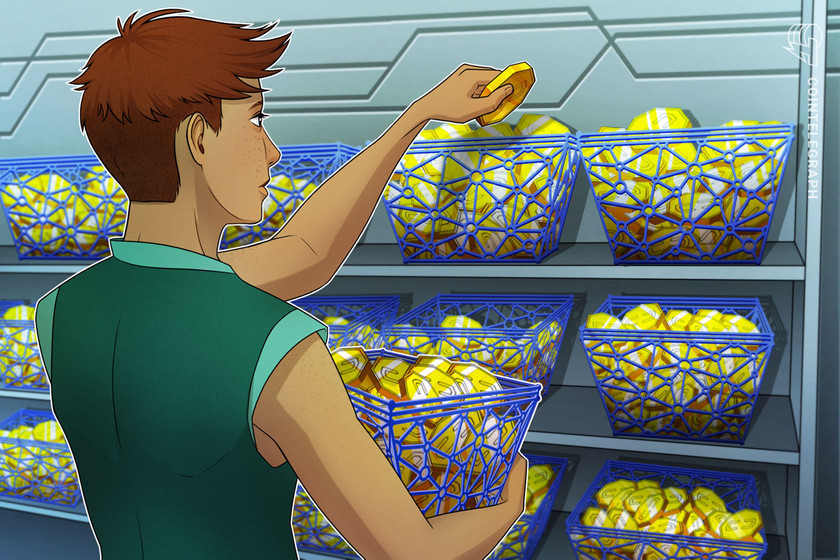
Crypto prices have dropped to multiyear lows, raising the question of which assets from which subsectors are ready for accumulation.
It’s weird to think that anyone could look forward to downturns in the crypto market, but that is precisely the position held by many developers and project creators who enjoy the low-pressure environment that exists during a bear market.
As the saying goes, bear markets are for building, and now is one of the best times to survey the landscape to see which sectors of the market are most active in designing the platforms that will soar to new heights in the next bull cycle.
Here’s a look at five sectors of the blockchain ecosystem that may present some of the best opportunities for accumulation while prices are low and demand is non-existent.
Layer-1 (L1) protocols like Bitcoin (BTC) and Ethereum (ETH) form the foundation that much of the cryptocurrency ecosystem is built upon and enable most of the other sectors of the market to exist.
That being said, currently, there are not many options available for launching other protocols on the Bitcoin network and Ethereum has well-known limitations in terms of scalability, which can lead to high transaction costs and slow processing times.
Due to these factors, there remains a significant opportunity for other L1 protocols to establish themselves and carve out a good slice of market share. The total revenue generated by a protocol is one metric that can be used to determine which networks see the most usage.

According to data from Token Terminal, the top five L1 protocols in terms of total revenue over the past 180 days, excluding Bitcoin and Ethereum, are BNB Smart Chain (BNB), Avalanche (AVAX), Helium (HNT), Fantom (FTM) and Solana (SOL).
As mentioned above, the Ethereum network has limitations in terms of scalability that won’t be solved during the upcoming Merge, leaving an opening for layer-2 protocols to fill the need by helping to reduce the activity that occurs directly on the Ethereum blockchain.
According to L2Beat, which tracks the stats on the top Ethereum L2s, Arbitrum is ranked number one in terms of total value locked (TVL), followed by Optimism and dYdX.

One network that was curiously left off the list provided by L2Beat, but remains the most highly adopted L2 in terms of active wallets and protocols launched is Polygon (MATIC), which currently has a TVL of $1.59 billion, according to data from DefiLlama.
As for the Bitcoin network, the main L2 solution that is currently seeing increased inflows is the Lightning network, but there is no token involved with the protocol. Instead, users can opt to run a node if they want to support the network as well as earn passive income.
The gaming sector of the cryptocurrency ecosystem has proven to be one of the more resilient in terms of keeping users engaged during the current crypto winter.
The emergence of play-to-earn games like Axie Infinity (AXS) helped shine a spotlight on the possibilities of blockchain-based gaming during the bull cycle of 2021 and has led to an offshoot of numerous “-to-earn” type protocols such as move-to-earn and learn-to-earn.
Data from DappRadar shows that some of the top games in terms of active users include Alien Worlds, Splinterlands and Farmers World, all of which operate on the WAX network while Axie Infinity is the top game in terms of the value of assets held in its smart contract.

There are also a host of other games that are still in development but nevertheless attracting a lot of attention, including Illuvium and Aavegotchi, as well as tokens that represent gaming ecosystems such as Enjin Coin (ENJ), Gala (GALA) and Ultra (UOS).
One sector of the cryptocurrency landscape that has yet to really get established in a notable way but represents a good opportunity to help increase adoption is social engagement platforms similar to Twitter, Facebook or Reddit.
Previous front runners in the social media landscape include Steem and its community-driven offshoot Hive, but neither protocol has really achieved widespread adoption to date.
While no other protocols currently in operation have managed to crack the code that attracts a lot of users who stay engaged long-term, events in the wider world including the ongoing drama around Elon Musk’s purchase of Twitter show that social media remains in need of an openly accessible community-focused platform.
Related: 34% of gamers want to use crypto in the Metaverse, despite the backlash
A final sector worth keeping an eye on due to its widespread appeal with mainstream society including efforts that are already underway to integrate it into daily life is the Metaverse.
To help simplify matters, th Metaverse is a virtual reality representation of all the data and interactions that occur on the internet, built on top of blockchain technology.
While the concept of the Metaverse is still in its infancy, it’s a popular topic of conversation around the crypto sphere and is already attracting large investments from some of the most well-known and recognizable brands in the world.
10 top companies investing/building in the Metaverse:
— Upenyu (@AskUpenyu) February 16, 2022
1. Microsoft
2. Meta
3. Tencent
4. Nike
5. Alibaba
6. Accenture
7. Adidas
8. JP. Morgan
9. NVIDIA
10. Roblox
See the future. Plan ahead.#Metaverse #web3 #blockchain pic.twitter.com/5JgOl1dlE4
In addition to the Metaverse, platforms that specialize in the creation and launch of nonfungible tokens (NFTs) are also worth paying attention to as the NFT sector has been shown to be popular with the general public.
Some of the most developed and adopted Metaverse and NFT platforms currently in operation include The Sandbox (SAND), which recently partnered with Playboy to launch a MetaMansion social game on the platform, as well as Decentraland (MANA) and ApeCoin (APE).
The views and opinions expressed here are solely those of the author and do not necessarily reflect the views of Cointelegraph.com. Every investment and trading move involves risk, you should conduct your own research when making a decision.

The famous Stanford Marshmallow Experiment takes the orange pill during a study of 25 school kids on the Isle of Man.
A Bitcoin (BTC) experiment on the Isle of Man involving the Lightning Network, 25 schoolchildren, and a promise of a milkshake has yielded interesting results.
At Willaston School on the Isle of Man (a British Crown Dependency nestled between the United Kingdom and Ireland), 25 year-6 students, one teacher and one teaching assistant participated in the light-hearted Bitcoin study.

MSW, a Data Analyst at CoinCorner, told Cointelegraph that he visited the school to discuss job opportunities and to inspire the kids, discussing his own career path which spans nuclear reactor study, data analytics and now, Bitcoin. Inevitably, the talk delved into the Lightning Network and CoinCorner's new creation, the Lightning-enabled Bolt Card.
“I talked a bit about Bitcoin, went through the Freddo index – how the price of a Freddo is exploding – then showed them the pound money supply over time and then asked them what they knew about Bitcoin.”
A familiar character in most Brits’ childhoods, the Freddo is a humble chocolate bar shaped like a frog. When introduced to greengrocers’ shelves at the turn of the millennium a Freddo cost just 10p ($0.13). In 2022, Freddo costs a whopping 27p, as shown by the following index:

Despite their young ages of 10 or 11, the kids knew of Bitcoin and some of its properties. One bright spark came up with the 21 million hard cap and overall, the classroom’s sentiment toward Bitcoin was positive. At one point, MSW was even asked if buying nonfungible tokens (NFTs) is a good idea. He set them right before gifting each pupil a Bolt Card loaded with £5 credit (21,554 Satoshis or $6).
The Bolt Card is a first-of-its-kind Lightning Network-enabled card that allows near-instant payments at merchants accepting BTC. The Lightning Lunch story demonstrates how it works in detail.
Lightning payments powered by @CoinCorner at @TheBTCAdventure ⚡️ ‘Happy with that!’ #Bitcoin #BoltCard #FixTheMoneyFixTheWorld pic.twitter.com/BL8eaZ5TTg
— Coach Carbon (@JosiasCarbon) July 3, 2022
Crucially, however, MSW included an important caveat as he gifted the card to the kids. “I sort of posed it as do you want to hodl or do you want to spend?” Having explained the deflationary, number go-up technology that enshrouds Bitcoin, MSM also showed the class where to spend their Satoshis if they so wished. Gourmet Shakes, a Bitcoin-friendly milkshake shack was a mouthwatering proposition.
MSW knew full well that the Bitcoin trial was reminiscent of the Stanford Marshmallow Experiment, a pop psychology trial from 1972. In short, the experiment attempted to understand delayed gratification in kids by offering the choice between an immediate reward or a greater prize if the children waited a period of time. The reward was either a marshmallow (hence the trials’ name) or a pretzel.

The “Isle of Man Satoshi Milkshake Experiment”–which maybe doesn’t quite have the same ring to it–yielded intriguing results. Of the 27 participants, just five people have spent their Satoshis, meaning 22 are Bitcoin HODLers.
In addition, as the experiment took place on May 29, the £5 of Bitcoin is now worth around £3.70 at the time of writing. If they want to spend their Bitcoin on a £3 milkshake, they need to act now!

MSW jokes that, unfortunately, the kids are too young to have a CoinCorner account. But the experiment is worthwhile in terms of promoting Bitcoin adoption and demonstrating that spending Bitcoin is easy. Plus, it ties into a growing subcategory of Bitcoin culture, from Bitcoin children’s books to educational tools for kids to understand sound money.
Related: The UK 'Bitcoin Adventure' shows BTC is a family affair
The Isle of Man is fast becoming a leading European Bitcoin destination. Around 40 businesses now accept Bitcoin on the island of 85,000 people, Molly Spiers CoinCorner’s head of marketing and communications told Cointelegraph:
“We’re on a mission to make it [Isle of Man] a Bitcoin Island–have people come over and live on a Bitcoin Standard. Hotels and accommodation are ones we’re missing at the moment though.”
As for the milkshake experiment, MSM suggested that it’d be worthwhile to take a trip to see the schoolchildren before the end of this year to see how they’re HODLing, and to demonstrate how to sweep the Bitcoin from the card if they so wish.

El Salvador payment app Chivo processed $52 million in remittances over the past 6 months, as expatriates make use of commission-free BTC transfers.
Salvadorans living abroad have sent over $50 million in remittances from January to May this year, according to the El Salvador Central Reserve Bank.
Douglas Rodríguez, president of the El Salvador central bank, unpacked the general economic outlook for the country on the local television news program Frente a Frente on Wednesday.
A major takeaway was the $52 million of remittances processed by national digital wallet service Chivo through the first five months of the year. This marks a 3.9%, $118 million increase in value when compared to the same period in 2021.
Chivo was launched in September 2021 as the Central American country became the first in the world to adopt Bitcoin (BTC) as legal tender. The launch of the app reportedly attracted more than 2 million users in less than a month, leading to major teething problems for the state-endorsed payment platform.
The government-sanctioned payment service provider was relaunched in February this year, necessitated by the onboarding of an estimated 4 million users looking to make use of low fees for payments and transfers made in BTC. American cryptocurrency exchange software firm AlphaPoint came onboard to address scaling and stability issues.
Related: Central African Republic president launches crypto initiative following Bitcoin adoption
Chivo offers users commission-free transfers and payments in BTC and U.S. dollars. El Salvador’s president and Bitcoin proponent Nayib Bukele has previously claimed the app will save citizens some $400 million in annual commissions spent using conventional remittance and payment service providers in the country.
The application also makes use of the Bitcoin layer-2 payment protocol Lightning Network, which provides low-fee BTC transactions. The adoption of Bitcoin and Chivo in El Salvador has had a measurable effect on the uptick in Lightning Network transaction volumes - with a 400% increase in payment volume over the past year.

Macro strategist Lyn Alden says it could be possible for leading digital asset Bitcoin (BTC) to support the planet’s population. In a new What Bitcoin Did interview, Alden says she can see BTC becoming a global money and supporting eight billion people due to how Bitcoin is layered. “Yes, I think the only way it […]
The post Can Bitcoin Support Eight Billion People? Macro Expert Lyn Alden Predicts How BTC Can Scale Globally appeared first on The Daily Hodl.

The latest software release, named lnd 0.15 beta (v0.15-beta), aims to empower developers to create solutions for more use cases by leveraging the Bitcoin network’s capabilities.
Lightning Labs, a developer of the Bitcoin (BTC) Lightning Network (LN), released a beta version of the Lightning Network Daemon (lnd) — a complete implementation of the LN node — with added support to the latest protocol upgrades including Taproot and Musig2 among other improvements.
lnd is a software component that handles various aspects within the LN including managing a database, generating payment invoices and revoking payments to name a few. The latest software release, named lnd 0.15 beta (v0.15-beta), aims to empower developers to create solutions for more use cases by leveraging the Bitcoin network’s latest capabilities.
Announcing lnd 0.15 beta: To Taproot and Beyond! ♾️
— Lightning Labs⚡️ (@lightning) June 28, 2022
Featuring:
Taproot + Musig2 support for better privacy + efficiency, Taro soon™
~95% database space reduction for new data
️ New pathfinding tool to choose speed vs. cost of payments
Read more: https://t.co/5pavMcpxBg
In the announcement, Lightning Labs’ product growth lead Michael Levin revealed that over 50 contributors participated in launching the company’s first release in the year 2022, adding that:
“This release gives complete Taproot support for the internal lnd wallet, making it one of the most advanced Taproot wallets today. Further, this release has support for an experimental Musig2 API compliant with the latest BIP draft.”
The primary goal of MuSig2, a multi-signature scheme, is to allow the creation of aggregate public keys that can be used in Taproot outputs, thus, introducing the ability to authorize transactions with Schnorr signatures.
Unlike previous versions, the beta release also removes the redundant data from the revocation log bucket, which showed a reduction of 95% in database size during initial testing. While the update does not reclaim space for existing states, Levin envisioned that a follow-up release may include a migration feature that could reclaim old disk space.
Staying true to their commitment to make the LN more reliable, robust, and secure, Lightning Labs introduced greater control over pathfinding preferences — ultimately helping to reduce the transaction fees by identifying the lowest cost route.
Related: Bitcoin network power demand falls to 10.65GW as hash rate sees 14% drop
The Bitcoin network recorded the year 2022’s lowest power demand of 10.65 gigawatts (GW) on June 25. As a result, the computing power for mining BTC blocks came down to 199.225 exahash per second (EH/s).

The sudden reduction in Bitcoin’s power demand is directly correlated to the falling hash rate. The mining hash rate corresponds to the computing power required by BTC miners to successfully mine a block — a key security metric.